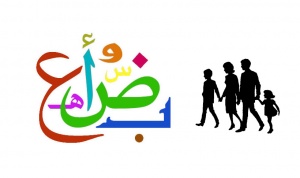Difference between revisions of "Language/Standard-arabic/Grammar/Plural"
m (Quick edit) |
|||
| Line 1: | Line 1: | ||
[[File:Arabic-Grammar-Plural.jpg|thumb]] | [[File:Arabic-Grammar-Plural.jpg|thumb]] | ||
Greetings everyone, | |||
In today's lesson, we will be discussing Arabic plurals. In Arabic, any noun that refers to more than three things or persons is considered plural, or Jam'a. The plural form of a noun can be created by adding certain letters or by changing the letters of the word itself. | |||
For instance, let's consider the noun "world" (A'lam) (عالم). To make it plural, we can add either (ون) or (ين) to the end of the word. Thus, the plural forms of "world" would be (عالمون) and (عالمين), both meaning "worlds." However, each form is used in different contexts. | |||
Similarly, we can change the letters of a word itself to form its plural form. For example, the word "man" (رجل) becomes "men" (رجال) when we change its letters. | |||
Another example is the noun "pencil" (قلم), which becomes "pencils" (أقلام) in its plural form. | |||
In Arabic, there are three types of plurals: Jam'a Mozakkar Salim (for male nouns), Jam'a Takseer (formed by changing the letters of the word), and Jam'a MoAnnas Salim (for female nouns). | |||
To form Jam'a Mozakkar Salim, we add (ون) or (ين) to the end of a noun. However, there are specific rules to follow, and we need to ensure that the noun is not a verb. | |||
Furthermore, we add (ين) when the noun is in a Maftooh or Maksoor form, and we use (ون) when the noun is in a Madmoom form. We will cover these terms in detail in another lesson. | |||
Finally, we can create Jam'a MoAnnas Salim (for female nouns) by adding (ات) to the end of the noun. | |||
In conclusion, this was a brief introduction to Arabic plurals. I hope you found this lesson informative and helpful. | |||
I | |||
==Other Lessons== | ==Other Lessons== | ||
Revision as of 12:24, 25 March 2023
Greetings everyone,
In today's lesson, we will be discussing Arabic plurals. In Arabic, any noun that refers to more than three things or persons is considered plural, or Jam'a. The plural form of a noun can be created by adding certain letters or by changing the letters of the word itself.
For instance, let's consider the noun "world" (A'lam) (عالم). To make it plural, we can add either (ون) or (ين) to the end of the word. Thus, the plural forms of "world" would be (عالمون) and (عالمين), both meaning "worlds." However, each form is used in different contexts.
Similarly, we can change the letters of a word itself to form its plural form. For example, the word "man" (رجل) becomes "men" (رجال) when we change its letters.
Another example is the noun "pencil" (قلم), which becomes "pencils" (أقلام) in its plural form.
In Arabic, there are three types of plurals: Jam'a Mozakkar Salim (for male nouns), Jam'a Takseer (formed by changing the letters of the word), and Jam'a MoAnnas Salim (for female nouns).
To form Jam'a Mozakkar Salim, we add (ون) or (ين) to the end of a noun. However, there are specific rules to follow, and we need to ensure that the noun is not a verb.
Furthermore, we add (ين) when the noun is in a Maftooh or Maksoor form, and we use (ون) when the noun is in a Madmoom form. We will cover these terms in detail in another lesson.
Finally, we can create Jam'a MoAnnas Salim (for female nouns) by adding (ات) to the end of the noun.
In conclusion, this was a brief introduction to Arabic plurals. I hope you found this lesson informative and helpful.
Other Lessons
- Coordination words
- Gender
- Sentense Structure
- Conjugation of the verb to write in the perfect
- Accents
- Negations
- Prepositions
- Plurals
- THE IMPERATIVE
- Future Tense
